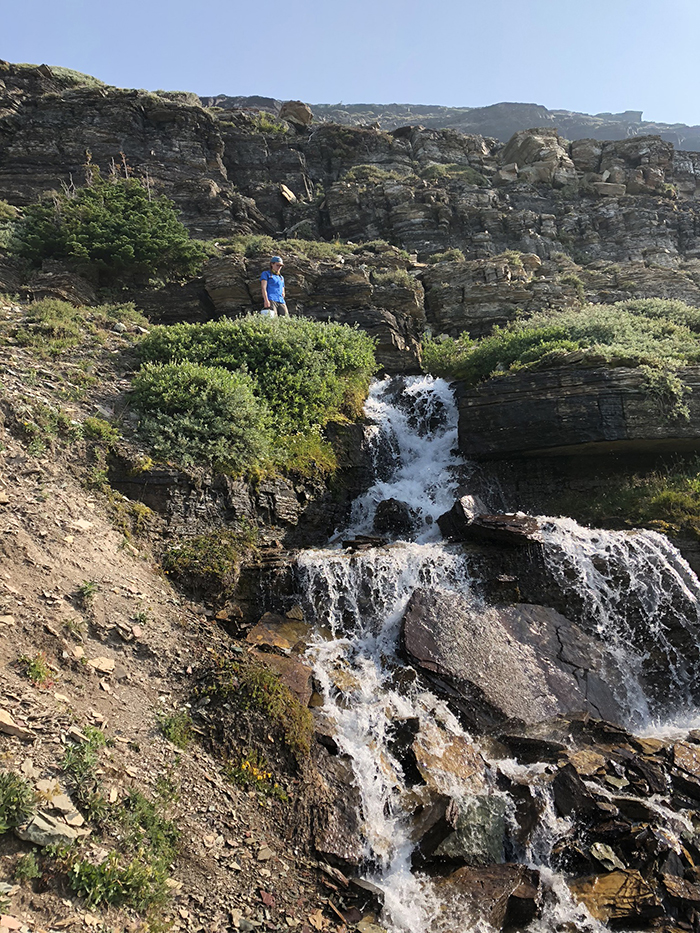“Simple question” leads to multi-year research study about effects of alpine glacial meltwater on groundwater in mountainous regions
04-08-2021
Writer(s): Cheryl Pierce
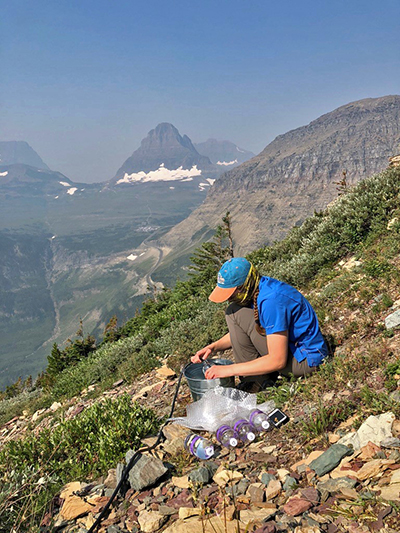
Alpine glaciers are formed high in the mountains and produce meltwaters that flow down the mountain. These meltwaters sustain life in mountain streams, lakes, and rivers. The meltwater from iconic frozen mountaintops is an essential building block to the Earth’s ecosystem, so when Jordyn Miller, PhD Candidate for Purdue Earth, Atmospheric, and Planetary Sciences (EAPS) asked her advisor a “simple” question years ago, she assumed there would be an answer readily available. She asked Dr. Marty Frisbee, EAPS hydrogeology professor, does meltwater from alpine glaciers contribute to mountain-block recharge and deep circulation within a mountain block. As it turns out, the simple question turned into a quest to deliver an answer because there is very little research in this area. In March of 2021, Miller published the first results of a multi-year research project.
“This project began in 2016,” explains Miller. “There were sampling campaigns in 2016, 2017, 2018, and 2019. The field campaigns were roughly 3 weeks long and were split between Mount Hood National Forest (MH) in Oregon and Glacier National Park (GNP) in Montana. While some sampling locations were easy to access, there were many that required backpacking to get to. This is where the importance of field assistants came in, because we need a lot of equipment/gear to collect these samples! In terms of scale, we sampled springs, streams, glacier ice/melt, snow, and rain from low to high elevations (think 500 ft to 7000 ft elevation in MH). The sampling locations were selected by a combination of topographical maps, anecdotal locations, and previous publications.”
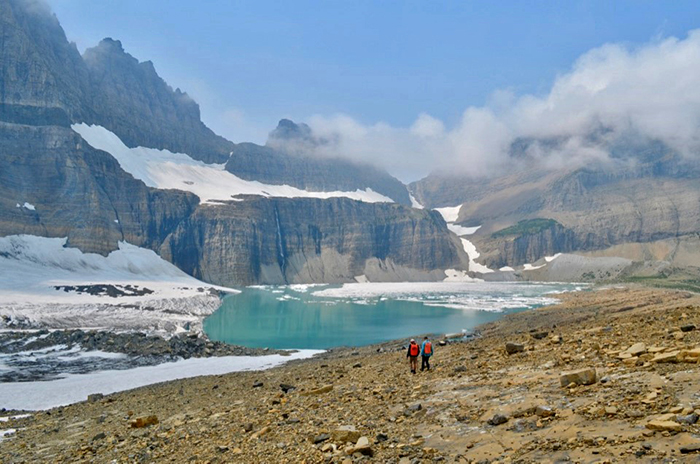
What she and her team, including Frisbee, learned was that recharge from glacial meltwater is vital in maintaining flow in alpine springs. Glacial meltwater supports distinct microbiomes that only exist due to this natural occurrence. According to her recent publication in Environmental Research Letters titled, “Recharge from glacial meltwater is critical for alpine springs and their mircrobiomes,” the importance of meltwater as it pertains to mountain-block recharge is poorly quantified even though her research shows that the meltwater is essential to the integrity of alpine aquatic ecosystems by maintaining baseflow in streams and perennial flow in these springs. The samples collected by the team led to the discovery that alpine glacier meltwater is a critical source of water for many springs and that certain springs, those that get most of their water from glacial melt, contain microbial taxa that are unique compared to springs supported by recharge from seasonal snow cover and rainfall.
A research study of this scale takes a great deal of time and analysis to complete. According to Miller, she had a great deal of help from her team.“I had a lot of help from field assistants (friends) collecting my data over the years. Almost everyone has graduated and are Purdue alum now. They are Zach Meyers (labmate, EAPS PhD, alum), Noah Stewart-Maddox (labmate, EAPS Master's, alum), James Haydock (EAPS undergraduate, alum), Kyle Kube (undergraduate, alum), Paul Acosta (EAPS PhD alum), Mariah Romero (EAPS Master's, alum), and Caelum Mroczek (undergraduate, alum). We also had our isotopic samples analyzed using Dr. Lisa Welp's lab. Her PhD student Ali Meyer ran most of the samples.” Jordyn also received training in microbiological analyses from her co-authors, Trinity Hamilton and Senthil Murugapiran.
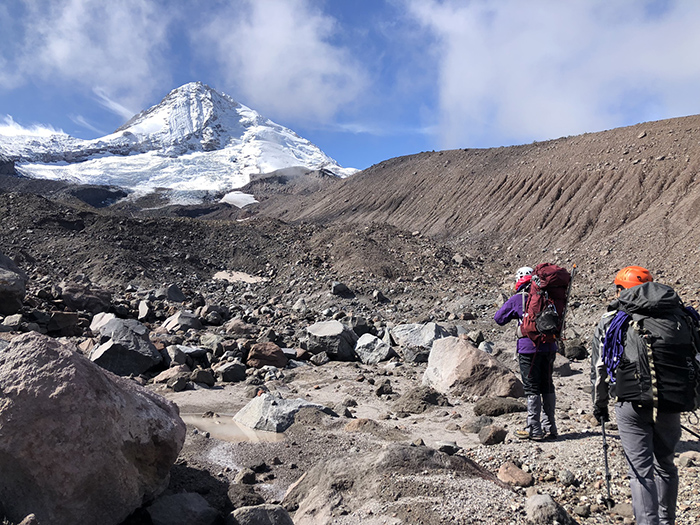
According to Frisbee, this research came about during a weekly research meeting with Miller. They were brainstorming ideas for tracers that would provide a unique “signature” of alpine glacial meltwater. But almost every tracer that they mentioned suffered from some degree of non-uniqueness. This means that the tracer may not always point only to glacial meltwater.
“The conversation evolved to the idea of whether we could use eDNA to trace sources of groundwater recharge in these alpine environments,” says Frisbee. “As luck would have it, Jordyn had done some field work with Trinity Hamilton, a microbiologist at the Univ of Minnesota with expertise in the microbiology of alpine ecosystems. We contacted Trinity and she was excited to collaborate. We set out with a simple goal, to determine if there were distinct microbiological markers associated with different sources of recharge (rain, snow, or glacial meltwater) in alpine settings.”
“I actually still have the notes I took and questions I asked him from that day,” says Miller. “After I graduated with my undergrad degree, I visited a friend who lives in Iceland and fell in love with big mountains, and all things cold and icy. From that moment, I knew that I wanted to go back to school and pursue a project in my graduate education involving the cryosphere. I also love the applicability and inherent importance of water in society, too.”
Now that this research has been published, Miller says that she will keep working on this topic. She points out that Frisbee wasn’t working with alpine glacial systems at all until she joined his lab.
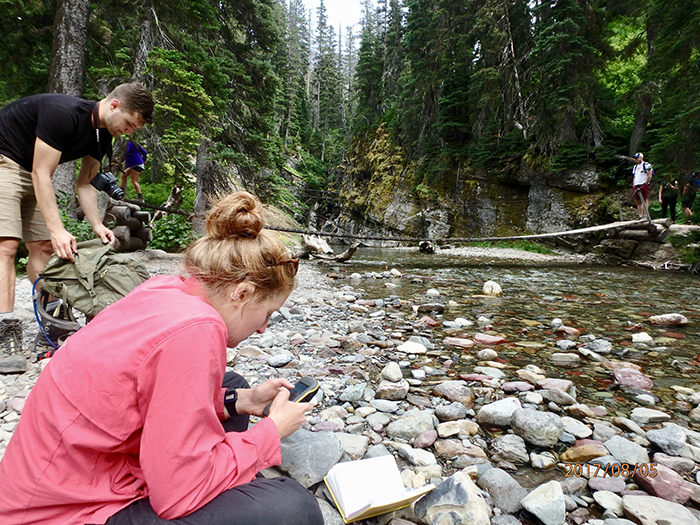
“We had originally planned to look for the eDNA markers of very specific microorganisms that are found on glacial ice and not on snow or in rain, but instead chose to look more broadly at the different microbiomes Jordyn’s research is very interesting and quite different from other mountain groundwater studies,” says Frisbee. “Using a combination of traditional isotopic techniques coupled with novel applications of microbiological markers, she can show that some springs are supported by a substantial component of recharge from glacial meltwater and in addition, those springs have unique microbiomes. One of the important implications is that these springs are supported by a temporary source of recharge. As a consequence, once the alpine glaciers are gone, some springs will desiccate and baseflow in the high-mountain streams will be diminished. The time-lag of these responses is uncertain and requires additional research. As is often the case, this finding has led us to other questions. Jordyn’s research is very thought provoking. It took a lot of hard work and perseverance from Jordyn to get the publication finished during these difficult times. Jordyn’s research takes mountain hydrogeology into a new direction.”
He says this entire project stemmed from Miller’s interests and from that one “simple question.” According to Frisbee, “I hope that she will continue to push the boundaries of mountain hydrogeology in the future.”
